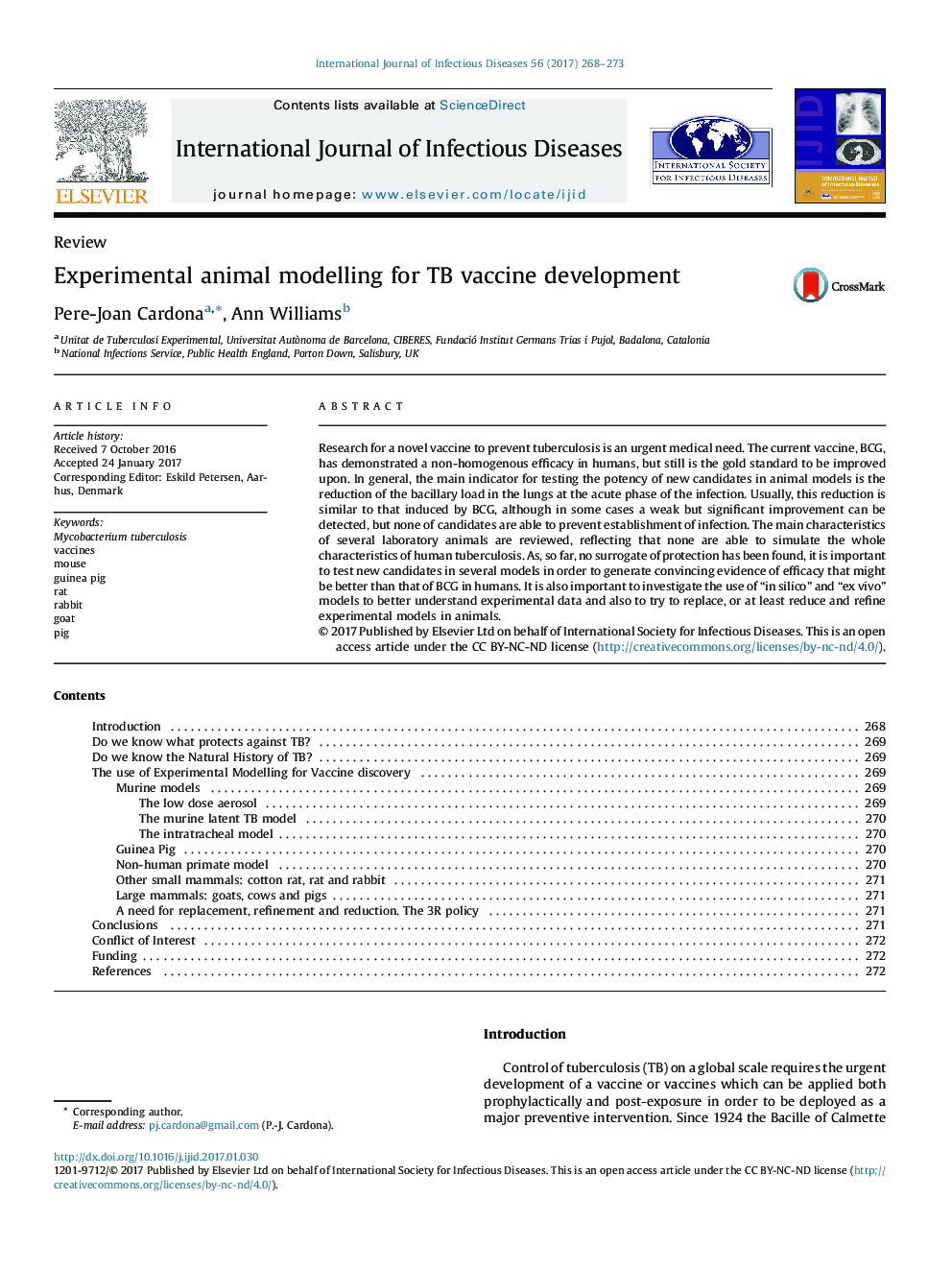| کد مقاله | کد نشریه | سال انتشار | مقاله انگلیسی | نسخه تمام متن |
|---|---|---|---|---|
| 5667594 | 1592037 | 2017 | 6 صفحه PDF | دانلود رایگان |

- Vaccines are screened in multiple animal models and each has merits.
- Models which better reflect the human pathology spectrum should be included along with novel “ex vivo” models.
- Integration of experimental data using mathematical models is important.
Research for a novel vaccine to prevent tuberculosis is an urgent medical need. The current vaccine, BCG, has demonstrated a non-homogenous efficacy in humans, but still is the gold standard to be improved upon. In general, the main indicator for testing the potency of new candidates in animal models is the reduction of the bacillary load in the lungs at the acute phase of the infection. Usually, this reduction is similar to that induced by BCG, although in some cases a weak but significant improvement can be detected, but none of candidates are able to prevent establishment of infection. The main characteristics of several laboratory animals are reviewed, reflecting that none are able to simulate the whole characteristics of human tuberculosis. As, so far, no surrogate of protection has been found, it is important to test new candidates in several models in order to generate convincing evidence of efficacy that might be better than that of BCG in humans. It is also important to investigate the use of “in silico” and “ex vivo” models to better understand experimental data and also to try to replace, or at least reduce and refine experimental models in animals.
Journal: International Journal of Infectious Diseases - Volume 56, March 2017, Pages 268-273